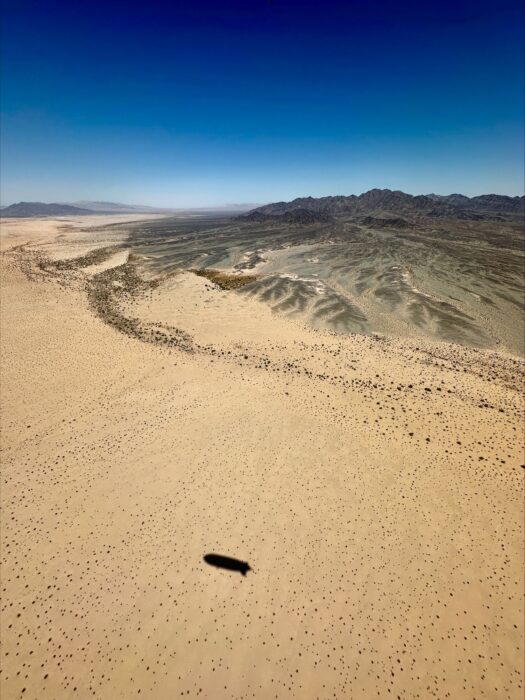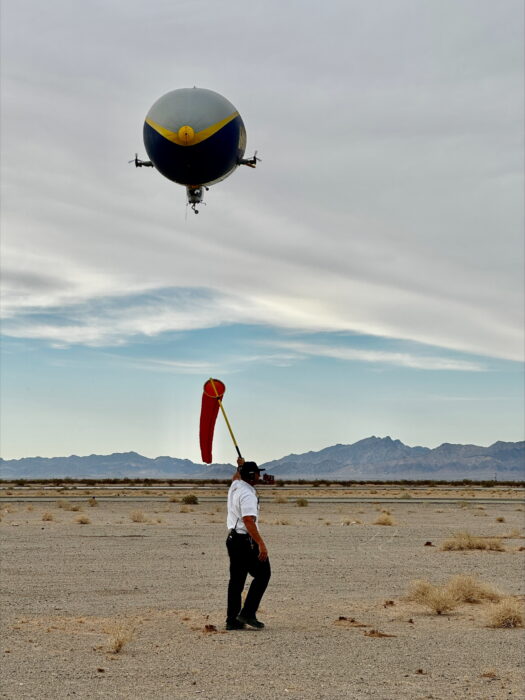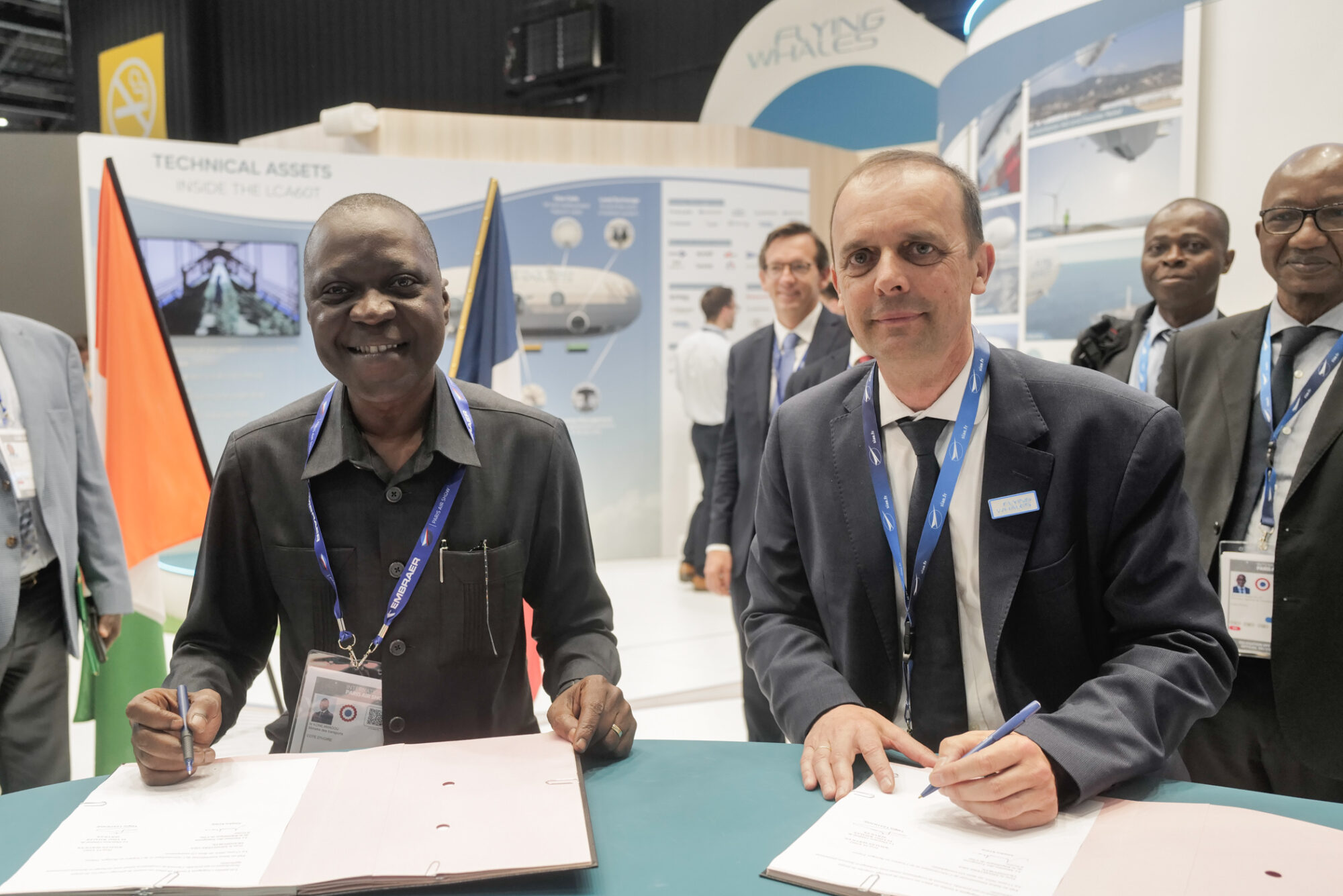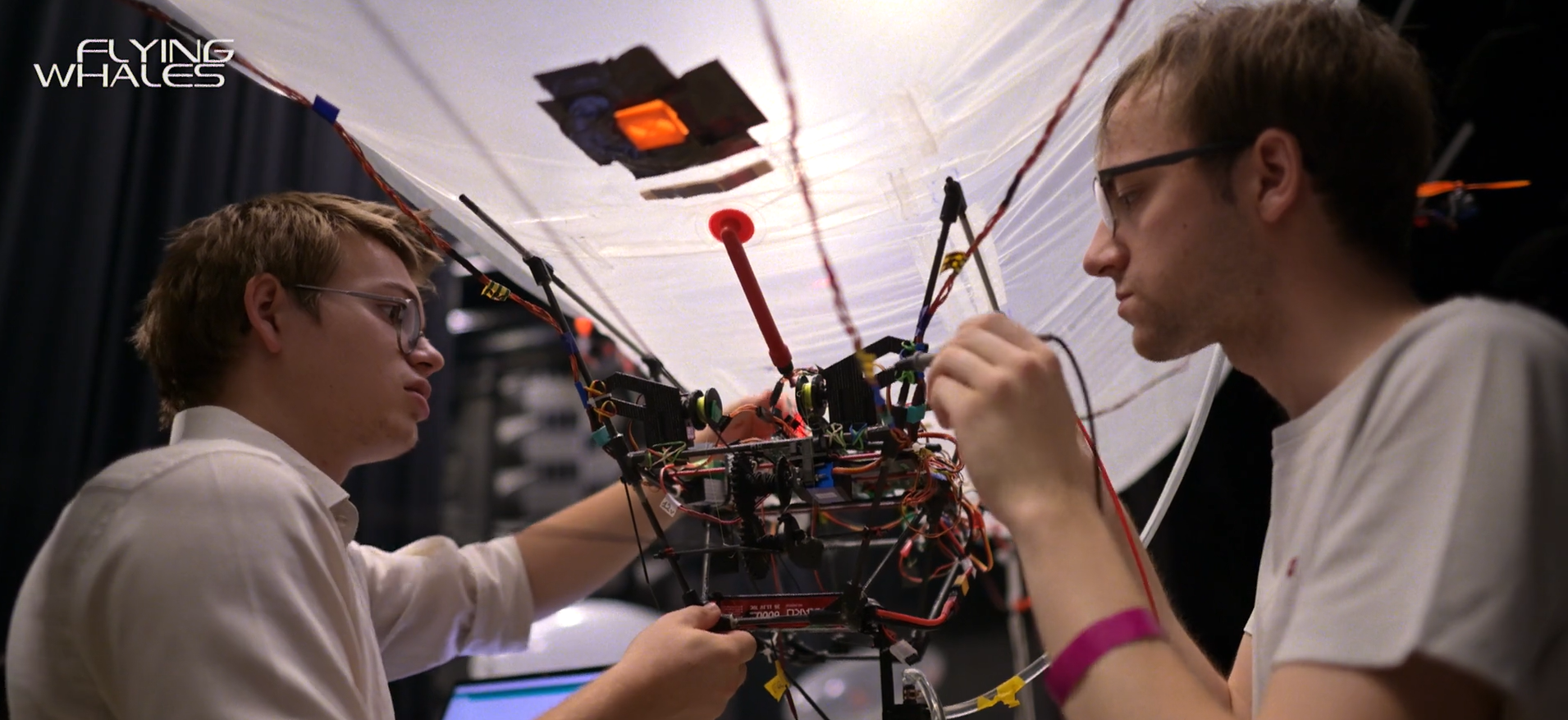- Préparation
- Take-off
07.05.25 / Publications
Testimonials from our pilots on skills maintenance missions in the USA
Testimonials from our pilots on skills maintenance missions in the USA

Testimonial from Oliver, Pilot at Goodyear
Testimonial from Oliver, Pilot at Goodyear
As Goodyear is currently facing a shortage of pilots, they have reached out to me to support their busy operational schedule. Although the airship is certified for single-pilot operations, Goodyear adheres to a two-pilot policy. Due to their specific training requirements based on Zeppelin NT standards, only a limited number of pilots are qualified to serve as instructors.
During the current tour — which includes flights over the Coachella Festival, passenger operations in Las Vegas, and coverage of sporting events — I am assisting the Goodyear team with their daily flight duties. These include flight planning, weather analysis, and in-flight operations, among other responsibilities. Additionally, two new student pilots are currently being introduced to the unique characteristics of Zeppelin NT operations.
The tour is divided between two locations: Blythe, California, and Las Vegas, Nevada. The environment poses significant operational challenges, including extreme temperatures, high altitudes, and variable wind conditions. These factors require meticulous pre-flight planning, particularly for effective helium management. It is crucial to ensure that the airship maintains sufficient lift during the day while avoiding overpressure at altitude and underpressure issues at night, due to temperature drops while moored.
Operating in temperatures reaching 39°C or higher, combined with intense thermal activity, makes ground handling, cross-country flights, and passenger operations particularly demanding. Strong thermals often increase flight risk, especially during passenger flights, which can sometimes result in last-minute cancellations.
Each tour is unique and shaped by the spirit and cooperation of the team. Mutual respect and professionalism are essential, as every team member plays a vital role in ensuring safe and efficient operations. While the scenery can be breathtaking, the environment is also harsh — with extreme heat and encounters with venomous wildlife such as snakes and scorpions adding to the challenge.
Successful airship operations depend on the team’s continued flexibility and dedication to adapt to rapidly changing circumstances. One of the more challenging aspects is the misconception held by those who haven’t experienced such tours firsthand. External impressions — often formed through photos or brief reports — can lead to misunderstandings about the nature of the work, portraying it as leisurely or recreational. In reality, these operations demand a high level of commitment, endurance, and a team-first mindset at all times.
Despite the challenges, it remains a deeply rewarding experience, filled with camaraderie, professionalism, and a shared dedication to excellence. Nevertheless, it can be dangerous and requires intense focus at all times.
And finally: real-world airship operations often prove that theory and practice don’t always align: adaptability is key.
Testimonial of Mark, pilot at Skyship Services
Testimonial of Mark, pilot at Skyship Services
The job of a commercial airship pilot is a lifestyle choice, not an occupation. In one sentence, this summarises the role. Zeppelin in Friedrichshafen is the exception rather than the rule. It has been the only location to support a long-term passenger operation. Airship Ventures failed in San Francisco, and in their final year, they too had to “go on the road”. As a result, most commercial airship work is mobile, with the airship traveling from event to event, wherever the client feels it’s best to promote their message.
America is well suited to this. The flying environment is flexible and adaptable, and blimps are far more widely known there than in Europe. If you want to see America from 1,000 feet, a blimp is the way to do it. The days of the week tend to blur together, as the airship typically operates on weekends for major events. It flies when the weather is good. Rest days are usually taken when the weather is poor. This flexible rhythm reinforces the idea that this is a lifestyle, not just a job. That idea is also reflected in the nicknames of two crewmen from my first ship, twenty-five years ago: Side Show Ron and Carni Bob—perfect names for “blimpers”.
This lifestyle may be attractive to some and off-putting to others. As a pilot, if you want luxury hotels in exotic locations after you land, Air France is the place for you. If you’d rather work in a close-knit team and see parts of the world most tourists never experience, then blimping is for you. I’ve been lucky to see a lot of the world. This recent trip from Nashville to San Antonio was especially enjoyable—mainly for reconnecting with former colleagues and getting back in the air. I still love flying from A to B, since the successful completion of a flight in this world is never guaranteed like it is in commercial aviation.
Blimping is never boring. It can be difficult and frustrating. Spending five days in Van Horn, West Texas, is not something I’d recommend. When that happened to me years ago, the town hadn’t yet been touched by the fracking boom and didn’t even qualify as a typical one-horse town. My hotel room was so small that when I turned off the light, I was already in bed before it got dark. The whole hotel would shake every time the 4-kilometre train passed through town.
But then there are the unforgettable moments—like flying over central Rome on a beautiful spring morning, or filming during the London Olympics.
To finish, I’ll say this: I was aiming for a long-haul airline job, and I found this by accident.
Life is what happens while you’re making plans.








